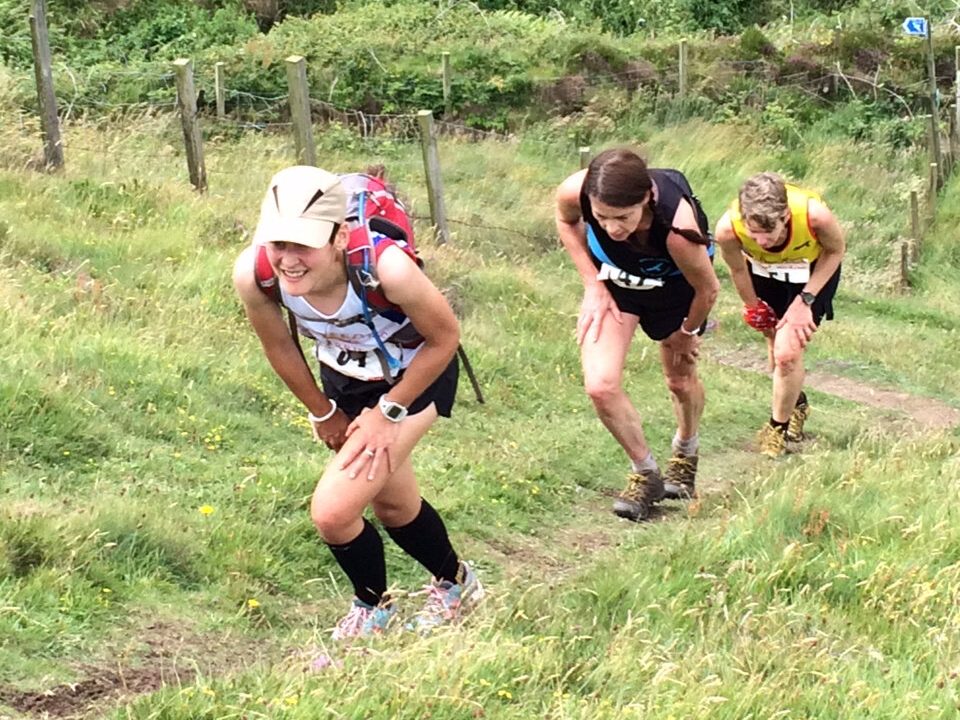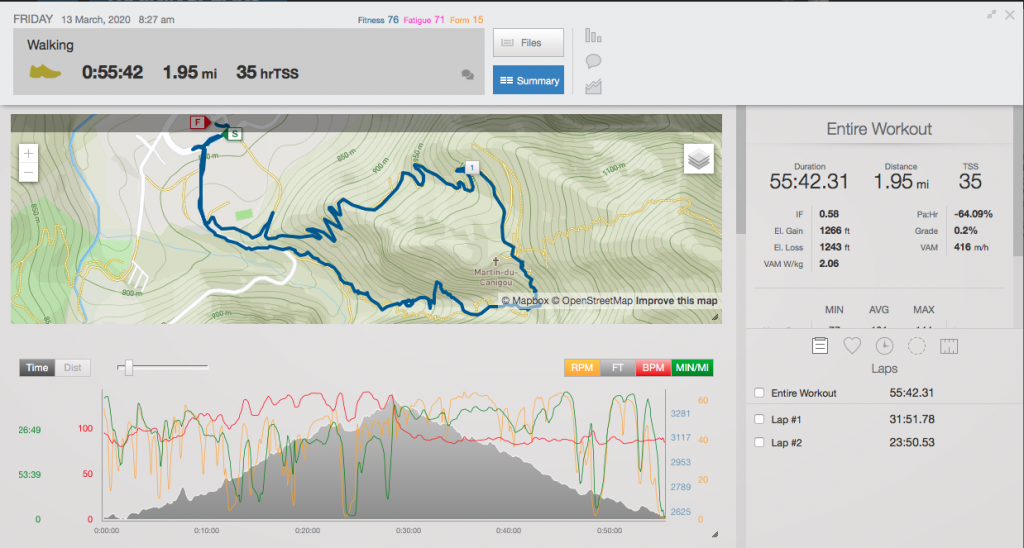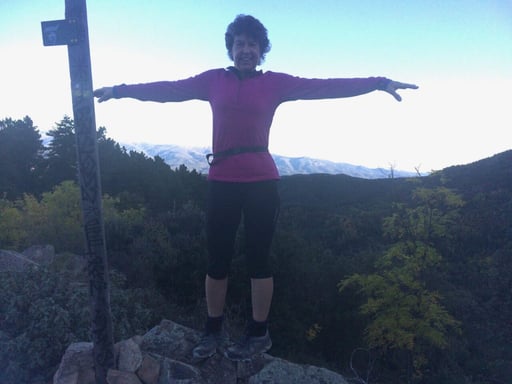Can Walking Help Me Be a Better Trail Runner

If you’re anything like me, you might think that in order to be a good runner you have to run…all the time. Whilst doing lots of running is a good way to get better at running, doing too much can actually cause you to over-train and become a lot slower, especially if you run fast a lot of the time. However, when we first got our dog, Fernie, I noticed a big jump in my fitness after about 12 weeks, the only difference in my training was that I was walking more.
So can walking help you be a better trail runner? As a way of cross training and getting in some guaranteed easy miles absolutely. But it’s a bit more complicated than just walking all the time and then becoming a good runner; you do still need to do some running to get fit, it’s more about varying the effort and intensity of your training, if you walk you are guaranteed to be working less hard than if you were running so it enables you to maintain some exercise without over straining. This can work particularly well for trail runners in several different ways:
1) Maintaining time in lower zones.
If you train a lot or exclusively off road and like me live in the mountains, it can be very difficult to stay in a lower training zone on your easy days. Creeping into higher zones can feel doable, but if the purpose of the run is an easy run you are not doing what the programme intended. If you want to get the most out of your hard sessions, you need to make sure that anything you do in between is easy enough so that you can recover for your next hard session. Even if you set off running, walking steeper hills and sections is a good discipline to get into to ensure you train at the right intensity on your easy days.
Most training plans will have a mixture of easy work outs and hard work outs, with the majority of your workouts being easy (usually an 80% easy to 20% hard). So, if you find it difficult to keep your easy days easy, why not try walking some or all of those days? This isn’t cheating; one of the things I have noticed about a route I regularly walk and run with my dog, Fernie, is that the Training Stress Score is the same or sometimes more when I’m walking!


2) Practise slowly first!
Whilst some people seem to naturally be able to run fast down hill, there is no doubt that a good way to make sure you nail a good descent is to practise it first. Practising it slowly (ie at walking pace) gives you time to think about good lines down, potential hazards etc which you might miss if you try and run down as hard as you can each time. When walking, you’re also more likely to look back up the hill once you get to the bottom to analyse the line you took and different possibilities. Once you’ve looked over something slowly, you can then pick up speed with more knowledge of what is to come. This is something you see all good mountain bikers do before a competition, if it works for them, why shouldn’t it work for trail runners?
3) It’s easier on the joints.
When you run you are placing significantly more force on every joint with each footfall (up to four times your body weight when running slowly), walking with its easier pace without the jumping action is much easier on your joints. Introducing some walking into your training when you have had some joint problems in the past, can be a good way of doing some training similar to running without the added injury risk. It’s also a good way to start a weight loss exercise programme for those who are significantly over their recommended BMI, raising your heartrate without the joint stress of running can be a great way to start training, introducing running sections slowly as your weight loss progresses.
4) Efficiency.

Just as the more running you do the more efficient you will be, so the more walking you do the more efficient you will become at walking. In a lot of trail/fell/mountain races, there will be sections that you need to walk due to the technicality of the terrain or the steepness of the hill; in fact at times it can be more efficient and economical to do so. If you include some into your schedule, you can walk with confidence during these parts of the course, knowing that you are going as fast and efficiently as possible.
For very long races, if you know that you can walk at a good pace this is a good way of mixing up the rhythm and maintaining an overall steady pace, rather than over-cooking it at the start. As part of maintaining my fuel during longer runs, I often slow to a walk to eat then pick up the pace after, I just find it easier to eat that way.
5) A good way to maintain some fitness whilst injured/ill.

For most endurance runners there’s nothing worse than being injured and confined to the gym to do recovery exercises. If your injury permits it, walking can be a great way to get outdoors, meet friends and maintain some base fitness whilst you recover.
I’ve already mentioned in a previous blog how walking can be some safer light training to do when you have a cold or are feeling a bit under the weather. Whilst the objective here is always on recovering from your illness, some time in the fresh air and gently moving your joints can be a good way to support your recovery and certainly far better than trying to run and making yourself ill again.
6) A good way to come back to running slowly after time off/injury.
Related to the above, it can be very tempting after a long time off to think that we can train at the same intensity we could when we stopped…we can’t…we have to start from where we are at. Gradually reintroducing running back into your training programme is key to not becoming injured/ill again; walk/runs or running days interspersed with walking days can be a good way of making the come back as gradual as it needs to be. I know personally I find it hard to go out for a 5 minute run to ‘test my leg/hamstring/heart/lungs’ however if I could go for a 20 to 30 minute walk with 5 minutes of running in it this seems psychologically far more pleasing! Here is an example of how you might get back to running continuously for 30 minutes over a week; you could take more rest days and do it over two weeks if needed:
- Monday: Walk for 10 minutes, Run steady for 5 minutes, Walk for 5 minutes
- Tuesday: Walk for 10 minutes, Run steady for 10 minutes, Walk for 5 minutes
- Wednesday: Walk for 10 Minutes, Run steady for 15 minutes, Walk for 5 minutes
- Thursday: Walk for 10 minutes, Run for steady for 20 minutes, Walk for 5 minutes
- Friday: Off
- Saturday: Walk for 10 minutes, Run steady for 25 minutes, Walk for 5 minutes
- Sunday: Walk for 10 minutes, Rune steady for 30 minutes, Walk for 5 minutes.
7) A good way to build endurance
Many Couch to 5km programmes start by introducing elements of running into walking. This can be a brilliant way to build endurance in running as psyhologically it is much easier to start by running for a few minutes, knowing that you can have a break and walk in between. In this way, you will achieve far greater time running than you ever could by just running alone.
This is not just the stuff for beginners however. When looking at doing some speed work, the principle is the same; you will do some higher intensity efforts with a recovery walk/jog in between. That minute to three minutes of rest means that you can spend far more time at a higher intensity than you ever could by trying to complete the whole work out with no rest.
Additional Questions
How can I incorporate walking into my running programme?
Walking can be a perfect recovery exercise after a hard session, especially for those of you who struggle to rest completely. If you run most days of the week, but find that you are struggling to do more than one speed/structured session, you could try walking the day after your hard session. If you are running well and looking for ways to increase your exercise, you could incorporate a morning walk into your running plan. I often train twice a day, but my secondary training session is frequently a walk, especially if I feel particularly tired.
How fast should I walk?
For any exercise to be effective it needs to raise your heart rate so when thinking about your walks it important to think about ‘walking with purpose’ so that you notice your heart rate is elevated. This doesn’t mean you have to speed walk, or over-stride, but it does mean that meandering round the shops is probably not going to have much training effect.
March 12, 2020

Comments